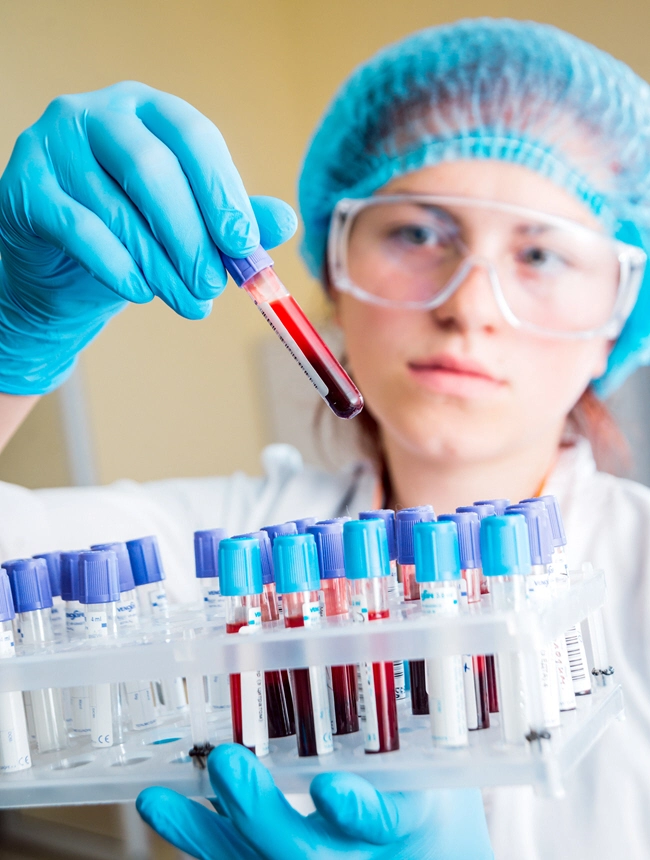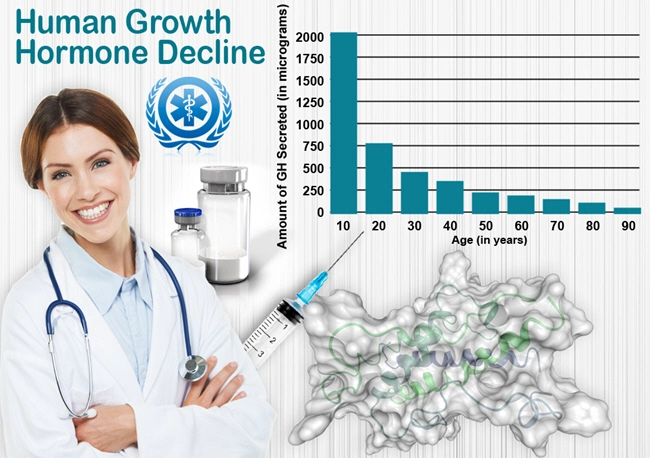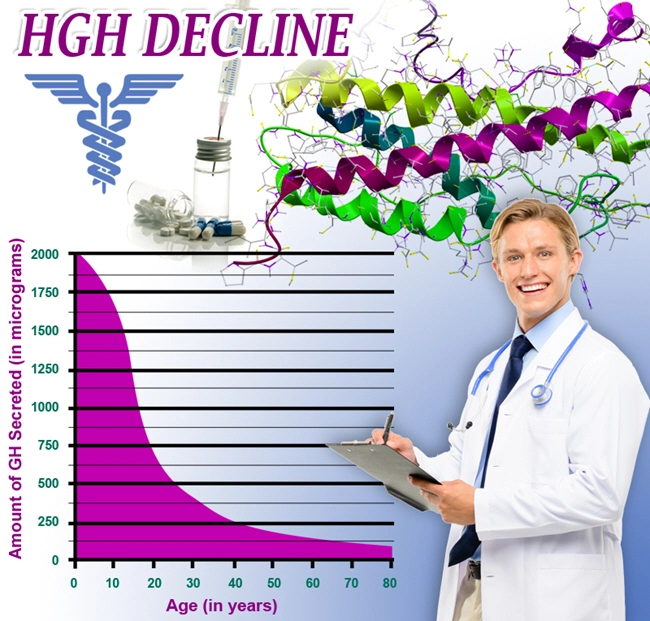
Below is a list of terminology regarding hormone therapy.
Video Link: https://vimeo.com/296952077
Video Download: Click Here To Download Video
Video Stream: Click Here To Stream Video
Video Link: https://vimeo.com/296953754
Video Download: Click Here To Download Video
Video Stream: Click Here To Stream Video
Video Link: https://vimeo.com/296955424
Video Download: Click Here To Download Video
Video Stream: Click Here To Stream Video
Glossary of Terminology
Adenosine Triphosphate (ATP): This is the primary fuel used by cells to generate the biochemical reactions essential for life.
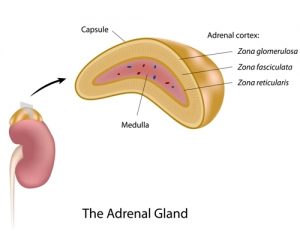 Adrenals: The glands located on the top of the kidneys that are responsible for the production of stress-related hormones, such as cortisol, DHEA, and adrenaline.
Adrenals: The glands located on the top of the kidneys that are responsible for the production of stress-related hormones, such as cortisol, DHEA, and adrenaline.
Adrenocorticotrophic Hormone (ACTH): The hormone released from the pituitary gland that interacts with receptors on the adrenal gland to begin the process of cortisol and DHEA production. ACTH uses the second messenger cyclic AMP to signal target cells in the adrenal gland.
Advanced Glycosylation Endproduct: The polymerized end products of protein cross-linked with glucose. AGE's tend to adhere to capillaries and arteries increasing the risk of heart disease, blindness, and kidney failure. AGE's are best estimated by the levels of glycosylated hemoglobin in the bloodstream.
Aerobic Capacity: The body's ability to process oxygen. It is a combination of lung capacity, the size of the capillaries, the pumping action of the heart, and the transfer of oxygen from red blood cells to target tissues.
Aerobic Exercise: Exercise with a low enough intensity to facilitate adequate oxygen transfer to the muscle cells so that no buildup of lactic acid is observed. This type of training is useful for reducing insulin levels and lowering blood glucose.
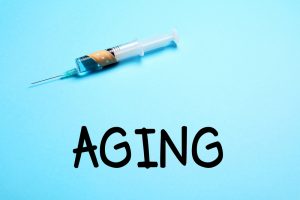 Aging: The general deterioration of the body with increasing age.
Aging: The general deterioration of the body with increasing age.
Amino Acids: These are the building blocks of protein. There are eight essential amino acids the body cannot make and, therefore, must be included in the foods you eat.
Amygdala: The portion of the limbic system in the brain that processes emotions.
Anaerobic Exercise: Exercise at an intensity that exceeds the ability to supply oxygen to the muscle cells leading to the buildup of lactic acid. Anaerobic exercise stimulates the synthesis of both growth hormone and testosterone.
Anabolic Steroids: Synthetic analogs of testosterone that maintain the anabolic (i.e., biological muscle-building effects) while reducing the virilization effects of testosterone.
Anti-aging Zone Lifestyle Pyramid: The combination of the Zone Diet, moderate exercise, and meditation that interacts to reduce the four pillars of aging (excess insulin, excess blood glucose, excess free radicals, and excess cortisol). Of the three components of the Anti-aging Zone Lifestyle Pyramid, the Zone Diet is by far the most important.
Arachidonic Acid: An essential fatty acid that is the immediate precursor to "bad" eicosanoids found in fatty red meats, egg yolks, and organ meats.
Autocrine Hormones: Hormones that act upon the secreting cell. They are used to sample the immediate environment surrounding the cell. Eicosanoids are the best-known example of autocrine hormones.
Benign Prostatic Hypertrophy (BPH):
The natural enlargement of healthy prostate tissue as a man ages. As the prostate enlarges, men usually have difficulty urinating.
Binding Proteins: Proteins that bind to water-soluble hormones, such as sex hormones, cortisol, and thyroid; or specific water-soluble proteins, such as insulin-like growth factor to maintain stable circulating levels of the hormone in the bloodstream.
Biological Marker of Aging: Any physiological marker that appears to be universal in an aging population.
Biological Response Modifier: Any molecule that can provide a natural response of cells to changes in its external environment.
Blood Glucose: The primary source of energy for the brain. Elevated blood glucose levels cause diabetes and accelerate aging.
Calcium Oxalate Kidney Stones: Kidney stones form from various molecules. They are usually crystals of one or another molecule but may be composed of combinations of elements or, rarely, protein matrix. Calcium oxalate is the most common type of stone. These stones are usually easy to see on x-rays and cannot dissolve.
Calorie Restriction: The reduction of calories that maintains adequate levels of protein and essential fats while also supplying sufficient amounts of micro-nutrients (vitamins and minerals).
Corticotropin-Releasing Hormone (CRH): The hormone released from the hypothalamus that interacts with the pituitary to produce ACTH. This hormone uses the cyclic AMP for its second messenger.
Cortisol: The hormone released by the adrenal glands in response to stress or low blood glucose. Its primary mode of action in times of stress is to shut down eicosanoid synthesis. Its synthesis in the adrenal gland requires the second messenger, cyclic AMP.
Cyclic AMP: A second messenger that begins the biological response initiated by a hormone. Cyclic AMP derives from ATP. Many endocrine hormones use the cyclic AMP as their second messenger.
Cyclic GMP: A second messenger that begins the biological response initiated by a hormone. Cyclic GMP is the second messenger-induced nitric oxide.
Dehydroepiandrosterone (DHEA): A steroid hormone produced by the adrenal glands. Its primary function is to inhibit the binding of cortisol.
Diabetes: A condition in which blood glucose is not well controlled. Type I diabetics make no insulin, whereas people with type II diabetes are characterized by the overproduction of insulin, but the inability of the target cells to respond to the insulin.
Dopamine: A neurotransmitter that works in an axis with serotonin.
Eicosanoid: A hormone derived from a 20-carbon atom, polyunsaturated fat. Every cell in the body makes eicosanoids. As autocrine hormones, they are continuously produced by the cell to sample the external environment. "Good" eicosanoids generate AMP.
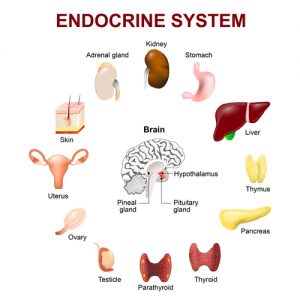 Endocrine Hormones: Hormones that are secreted by a discrete gland and then travel through the blood stream to target tissues.
Endocrine Hormones: Hormones that are secreted by a discrete gland and then travel through the blood stream to target tissues.
Endocrinology: The study of hormones. A more inclusive definition would be the study of biological communications.
Endocytosis: The process by which extracellular molecules (including hormones) enter a cell.
Endothelial Cells: The cells that line the vascular system. They act as a barrier between the blood stream and target cells that hormones must pass through to reach their receptors and exert their biological action.
B-Endorphin: A hormone derived from the pituitary that induces opiate-like responses to decrease pain. The release of its precursor hormone (B-lipotropin) requires cyclic AMP.
Essential Fatty Acids: These are the fats the body cannot make and therefore must be part of the diet. Essential fatty acids are also the building blocks of eicosanoids. There are two groups: omega-3, and omega-6 fatty acids, each giving rise to a different group of eicosanoids.
Erectile Dysfunction (ED): Male erectile dysfunction (ED) or impotence is the inability of a sexually active male to obtain and sustain an erection for sexual purposes.
Estrogens: A group of three steroid hormones that convey female characteristics and control fertilization. The production of estrogen is stimulated by follicle-stimulating hormone (FSH), which uses cyclic AMP as its second messenger.
Exocytosis: The process by which intracellular chemicals (including hormones) are released.
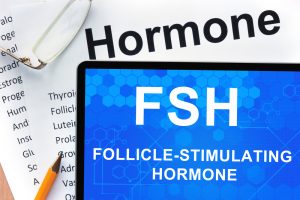 Follicle-Stimulating Hormone (FSH): The hormone released by the pituitary that stimulates estrogen production in females and sperm production in males. FSH uses cyclic AMP as its second messenger.
Follicle-Stimulating Hormone (FSH): The hormone released by the pituitary that stimulates estrogen production in females and sperm production in males. FSH uses cyclic AMP as its second messenger.
Free Radical: Any molecule that contains an unpaired electron. Free radicals are unstable and will extract electrons from other biological molecules, which generates more free radicals.
Functionality: The ability to live in an unassisted fashion.
Gland: A discrete organ responsible for the secretion of hormones. There are nine separate glands in the body. Three are in the brain (hypothalamus, pineal, and pituitary), three are in the throat area (thyroid, thymus, and parathyroid), two are in the midsection (pancreas and adrenals), and one is in the gonad area (testes for males and ovaries for females).
Glucagon: The hormone from the pancreas that causes the release of stored carbohydrate in the liver to restore blood glucose levels. Glucagon uses the second messenger, cyclic AMP, to exert its biological action.
Glucose: The only simple carbohydrate that circulates in the bloodstream. Glucose is the primary fuel utilized by the brain. It can also be utilized by the liver and muscles in a polymer form known as glycogen.
Glucose Tolerance: The ability of muscle cells and the liver to remove glucose from the bloodstream. As you age, glucose tolerance decreases.
Glycemic Index: A measure of the rate at which a carbohydrate will enter the blood stream as glucose. Some simple sugars, like table sugar, will enter the  bloodstream slower than many complex carbohydrates, such as bread, rice, and potatoes. The faster a carbohydrate enters the blood stream, the higher its glycemic index. The higher the glycemic index of a carbohydrate, the greater the increase in insulin levels. Fruits and vegetables tend to have a low glycemic index, whereas bread, pasta, grains, and starches tend to have a high glycemic index.
bloodstream slower than many complex carbohydrates, such as bread, rice, and potatoes. The faster a carbohydrate enters the blood stream, the higher its glycemic index. The higher the glycemic index of a carbohydrate, the greater the increase in insulin levels. Fruits and vegetables tend to have a low glycemic index, whereas bread, pasta, grains, and starches tend to have a high glycemic index.
Glycogen: The storage form of glucose. Only glycogen from the liver can be used to restore blood glucose levels.
Glycosylated Hemoglobin: A measure of the long-term control of blood glucose determined by the amount of carbohydrate-modified hemoglobin in the red blood cells. The higher the amount of glycosylated hemoglobin, the worse the control of blood glucose levels.
Growth Hormone: The hormone released from the pituitary that interacts with fat cells to release fatty acids and also the liver to produce insulin-like growth factors.
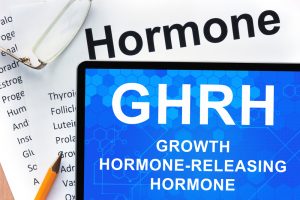 Growth Hormone-Releasing Hormone (GHRH): The hormone released from the hypothalamus that causes the release of growth hormone from the pituitary. GHRH uses the cyclic AMP as its second messenger.
Growth Hormone-Releasing Hormone (GHRH): The hormone released from the hypothalamus that causes the release of growth hormone from the pituitary. GHRH uses the cyclic AMP as its second messenger.
Hematuria: This is the presence of red blood cells in a urine specimen. It can be associated with kidney disease, a urinary tract infection, kidney stones, trauma, cancer of the urinary tract, and is sometimes healthy. Individual tests are ordered to rule out any serious medical problems.
High-Density Lipoprotein (HDL): The "good" cholesterol that helps remove cholesterol from cells. If insulin levels go up, then HDL levels go down. The lower your HDL level, the more likely you are to suffer cardiovascular complications.
Hippocampus: The portion of the limbic system in the brain that integrates incoming nerve impulses to the hypothalamus, and is also the memory center of the brain.
Hormones: Biological compounds that communicate information at a distance. Hormones require specific receptors to begin their biological action and use second messengers to initiate the cellular process that uses that information.
Hormonal (PCa): Hormonal therapy is based on the fact that prostate cancer cells frequently use the male hormone, testosterone, as fertilizer, and the absence of testosterone leads to the death or weakening, (apoptosis), of many, but not all, prostate cancer cells. As a result, many patients with incurable prostate cancer, (Stage D and late Stage C), can have their life extended and quality of life improved by the use of hormonal therapy.
Hormone Releasing Factors: Hormones released from the hypothalamus that directly affects the pituitary and initiates the release of other hormones into the bloodstream. Many hormone-releasing factors use cyclic AMP as their secondary messengers.
Hyperinsulinemia: The excess production of insulin. This is usually a consequence of insulin resistance in which the cells do not respond to insulin to reduce blood glucose levels.
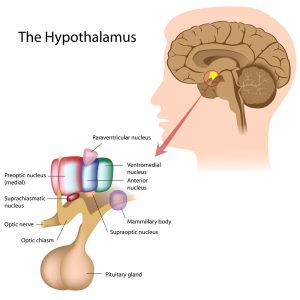 Hypothalamus: The portion of the brain's limbic system that integrates incoming information and either increases or decreases the release of certain hormones that instruct the pituitary gland to release hormones.
Hypothalamus: The portion of the brain's limbic system that integrates incoming information and either increases or decreases the release of certain hormones that instruct the pituitary gland to release hormones.
Incontinence: Incontinence is the involuntary loss of urine. Babies are incontinent until their nervous systems mature and they learn to control their urine flow. Incontinence can occur in males and females, old and young. It can be mild or severe. It usually can be treated.
Insulin: The hormone that drives incoming nutrients into cells for storage. Excess insulin is the primary pillar of aging.
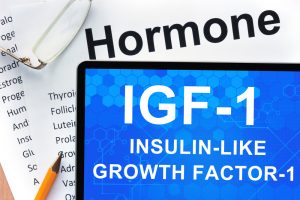 Insulin-like Growth Factor (IGF): The hormone released from the liver in response to growth hormone. IGF-1 is the hormone responsible for building muscle.
Insulin-like Growth Factor (IGF): The hormone released from the liver in response to growth hormone. IGF-1 is the hormone responsible for building muscle.
Insulin Resistance: A condition in which the cells no longer respond well to insulin. As a result, the body secretes more insulin into the blood stream to reduce blood glucose levels.
Impotence: The condition where a man can not achieve or maintain an erection suitable for sexual relations. Impotence can be caused by stress or psychological factors; however, it is more frequently associated with medical problems such as diabetes, elevated cholesterol, hypertension, heart disease, numerous medications, and other causes.
Interstitial Space: The space between the endothelial cells and target cells, such as the liver or the smooth muscle cells that line the vascular bed.
Intravenous Pyelogram (IVP): A unique x-ray test of the kidneys where an iodine dye is injected into the veins. The coloring is absorbed by the kidneys and excreted into the bladder. This x-ray test can identify tumors of the kidney, ureter, and bladder. Also, it may assist in determining a kidney stone.
Lean Body Mass: The total body weight minus the fat mass. Lean body mass consists of water, bones, collagen, and muscle.
Life Expectancy: The average age of which 50 per cent of newborn children survive.
Limbic System: The part of the brain that is concerned with more primitive impulses and maintaining biological homeostasis.
Longevity: The percentage of the maximum lifespan that an organism will reach before it dies.
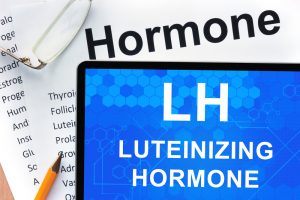 Luteinizing Hormone (LH): The hormone released from the pituitary gland that stimulates the production of testosterone in males and the creation of progesterone in females. This hormone uses cyclic AMP as its second messenger.
Luteinizing Hormone (LH): The hormone released from the pituitary gland that stimulates the production of testosterone in males and the creation of progesterone in females. This hormone uses cyclic AMP as its second messenger.
Kidney Stones: Most urinary tract stones originate as crystals in the kidney, grow within the organ, and then migrate or pass through the urinary tract. Stones can also start and expand within the bladder. Bladder stones are often associated with chronic urinary blockage or infection, or severe protein starvation sometimes seen in the third world. Prostate stones grow within the prostate, probably as a result of infection. Prostate stones do not migrate or pass.
Kidney stones are formed from varied molecules. They are usually crystals of one or another molecule but may be formed of combinations of elements or, rarely, protein matrix. Calcium oxalate is the most common type of stone. These stones are usually easy to see on x-rays and cannot be dissolved.
Macronutrient: Any food that contains calories and, therefore, can generate hormonal responses. Protein, carbohydrate, and fat are macronutrients.
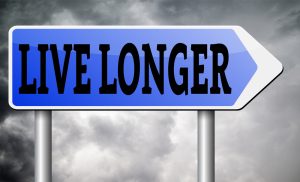 Maximum Life Span: The cannot period of life that an animal can expect to reach.
Maximum Life Span: The cannot period of life that an animal can expect to reach.
Melatonin: The hormone made in the pineal gland that controls circadian rhythms. It is also a powerful antioxidant for hydroxyl free radicals.
Micronutrient: Vitamins and minerals that have no caloric value and little direct impact on hormonal response.
Mortality Doubling Time: The amount of time required for the death rate to double after reaching adulthood.
Nitric Oxide: A proteohormone that generates cyclic GMP. Nitric oxide is a free radical.
Omega-3 Fatty Acids: A particular type of polyunsaturated essential fatty acids found primarily in cold-water fish and purified fish oils. This kind of fat is exceptionally beneficial to your cardiovascular system because of its effect on promoting the formation of "good" eicosanoids.
Omega-6 Fatty Acids: The type of polyunsaturated fatty acids found in protein and most seed oils. This kind of fat can generate both "good" and "bad" eicosanoids.
eicosanoids.
Penile Prosthesis: This is a semi-rigid implantable device inserted into the penile chambers to treat and fix severe cases of impotence or Peyronie's Disease. The procedure can be performed in an outpatient surgery center.
Percentage Body Fat: This describes the percentage of your total weight that is composed of fat. The higher your amount of body fat, the higher the likelihood of chronic diseases such as heart disease, cancer, or diabetes.
Peyronie's Disease: The condition where there is scarring following an injury to the tunica albuginea (the wall of the penile chamber) or for unknown reasons. As the scar tissue increases in size, it can squeeze and deform the penis where there is bending or angulation of the penile chambers. Peyronie's scar can result in a shortening of the penis and loss of erection.
Pineal: The gland located in the brain that synthesizes melatonin.
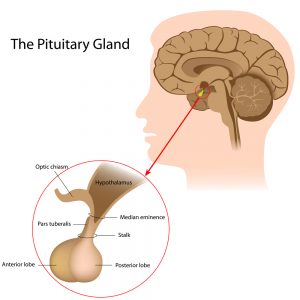 Pituitary: The gland from which some hormones are released into the bloodstream. These hormones include growth hormone, ACTH, B-lipocortin (the precursor to B-endorphin), FSH, LH, and TSH.
Pituitary: The gland from which some hormones are released into the bloodstream. These hormones include growth hormone, ACTH, B-lipocortin (the precursor to B-endorphin), FSH, LH, and TSH.
Priapism: A prolonged erection that will not subside naturally. Priapism is most often associated with penile injection therapy where the erection will last more than 4 hours. It is also related to Sickle Cell Anemia and may occur after taking Trazodone.
Progesterone: A hormone produced in response to luteinizing hormone (LH) released from the pituitary gland. It is required to flush out the uterus if an egg is not fertilized. It is also useful for stimulating the growth of new bone mass.
Progestins: Synthetic analogs of progesterone that have some of the properties of natural progesterone.
PSA Blood Test: PSA stands for Prostatic Specific Antigen, a particular blood test that can help detect prostate cancer. PSA is frequently elevated in prostate cancer and can be the first sign of this illness.
Prostate Gland: This is a gland about the size of a walnut that sits at the base of the bladder. The prostate gland makes nutrients that support the sperm. As a man ages, the prostate gland can enlarge causing urinary difficulties (BPH) or cause prostate cancer.
Prostatitis: Prostatitis is an inflammation of the prostate gland and is a common condition affecting many, if not most, men at some time in their lives. Like sinusitis, it can be acute, chronic, infectious, allergic, inflammatory, or even psychosomatic. While frequently disquieting and unpleasant it is rarely serious or life-threatening. There is no relationship between prostatitis and prostate cancer! Contrary to folklore, prostatitis, no matter how severe or long-lasting, has not been shown to lead to prostate cancer. There are three general types of prostatitis, bacterial prostatitis, the most common type, generally associated with a bacterial infection; non-bacterial or inflammatory prostatitis, when no infection is present; and prostatitis, or chronic pain in the prostate a subset of non-bacterial prostatitis.
Receptor: A molecule that recognizes a unique hormone. Once that hormone is bound to the receptor, the information carried by the hormone can now exert its biological action.
Second Messenger: Molecules that are synthesized in response to hormones binding to their receptors. Second messengers initiate the biological action of the hormone.
the hormone.
Semen Analysis: Evaluation of the sperm and seminal fluid. The number and motility of the sperm are evaluated, infection is ruled out, the volume and acidity of the liquid are assessed.
Seminal Vesicles: There are usually two seminal sacs or vesicles that lie behind the prostate where they collect fluid made by the prostate. This liquid becomes the seminal fluid that is ejaculated by a man when he is sexually active. The fluid transports and nourishes the sperm.
Serotonin: A neurotransmitter important in filtering out information. If its levels are low, it can be the underlying cause of depression and violence.
Struvite Kidney Stones: Kidney stones are formed from varied molecules. They are usually crystals of one or another molecule but may be formed of combinations of elements or rarely protein matrix. Struvite or infection stones are typically associated with chronic urinary infection and should be looked for in patients with urinary tract infection that's hard to clear. Struvite stones are usually visible on x-ray studies. Unfortunately, in the early stages only bladder symptoms may occur and the stones may progress silently, growing to fill the kidney, (staghorn calculus), and possibly destroy it.
Telomer: A small segment at the end of nuclear DNA that becomes shorter with every replication of the DNA. DNA will no longer replicate beyond a certain point of telomere reduction.
Testosterone: The hormone that promotes the building of muscle mass in males and libido in both sexes. 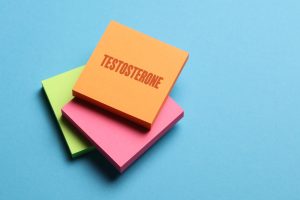
Thymus: The gland responsible for the production of specific white cells known as T-lymphocytes that are necessary for immune function. The thymus is very sensitive to excess cortisol.
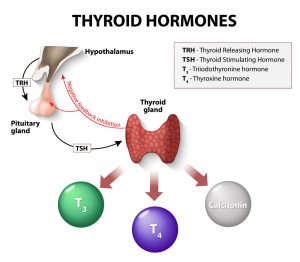 Thyroid: The gland in the throat that synthesizes thyroid hormones that affect metabolism.
Thyroid: The gland in the throat that synthesizes thyroid hormones that affect metabolism.
Thyroid-releasing Hormone (TRH): The hormone released from the hypothalamus that instructs the pituitary to release TSH.
Thyroid-Stimulating Hormone (TSH): The hormone released from the pituitary that causes the thyroid gland to produce the T4 hormone. TSH uses the second messenger cyclic AMP to initiate the synthesis of T4.
Trans Rectal Ultrasound (TRUS): TRUS is an examination where a finger-like probe is placed in the rectum, and ultrasound pictures are made of the prostate. TRUS is an even more fuzzy test than the Prostatic Specific Antigen. It is very helpful in directing biopsies to areas of high suspicion, but TRUS is nondiagnostic. It may give information about prostate size, shape, and significant local spread of prostate cancer, but it cannot make or deny the diagnosis of prostate cancer. TRUS should never be done as an isolated test, but only when a biopsy is to be done.
Triglycerides (TG): The form of fat found in various lipoproteins in the bloodstream. High levels of triglycerides are usually indicative of high levels of insulin. The ratio of TG/HDL is a powerful indicator of insulin levels and is strongly predictive of future cardiovascular events.
Type 2 Diabetes: A diabetic condition characterized by the overproduction of insulin (hyperinsulinemia), increased AGE production, and decreased longevity.
T3: The active form of T4 synthesized in the peripheral tissue.
T4: The thyroid hormone that is released from the thyroid gland in response to TSH, which generates cyclic AMP.
 Uric Acid Kidney Stones: Kidney stones are formed from varied molecules. They are usually crystals of one or another molecule but may be formed of combinations of elements or rarely protein matrix. Uric acid stones are common in people with gout and in individuals who excrete significant amounts of uric acid in the urine. Uric acid stones can not be seen on x-ray, and require special tests, such as an IVP, (x-rays with injected contrast), spiral CT scans or sonography to be found. Uric acid stones can be due to family factors, various medical conditions, or diets very high in animal proteins. This is the only stone that can be reliably dissolved with medical treatment.
Uric Acid Kidney Stones: Kidney stones are formed from varied molecules. They are usually crystals of one or another molecule but may be formed of combinations of elements or rarely protein matrix. Uric acid stones are common in people with gout and in individuals who excrete significant amounts of uric acid in the urine. Uric acid stones can not be seen on x-ray, and require special tests, such as an IVP, (x-rays with injected contrast), spiral CT scans or sonography to be found. Uric acid stones can be due to family factors, various medical conditions, or diets very high in animal proteins. This is the only stone that can be reliably dissolved with medical treatment.
Ventromedial Nucleus (VMN): The part of the hypothalamus sensitive to excess glucose.
Varicocele: Dilation of the veins draining blood from the testicle back to the body. There is increased blood and heat around the testicle thus causing injury to the sperm. A varicocele can be treated with surgery.
Vasectomy: The surgical process of male birth control. The vas tubes which carry the sperm are interrupted. Vasectomy can be performed as an out-patient with the "No-scalpel Technique" which is less traumatic.
Vas Deferens: The tube that carries the sperm from the epididymis and testicle to the penis. The tube has thick muscles to move the sperm a long the track
Xanthine Kidney Stones: Kidney stones are formed from varied molecules. They are usually crystals of one or another molecule but may be formed of combinations of elements or rarely protein matrix. Xanthine or Cysteine stones are rare. They may be hereditary in origin or related to certain medical conditions or medications. They are invisible to X-rays and require specialized treatment to treat.
combinations of elements or rarely protein matrix. Xanthine or Cysteine stones are rare. They may be hereditary in origin or related to certain medical conditions or medications. They are invisible to X-rays and require specialized treatment to treat.
Zone Diet: A calorie-restricted diet that provides adequate protein, moderate levels of carbohydrates a long with essential fats, and micronutrients spread throughout the day into three meals and two snacks that approximately maintain the protein-to-carbohydrate ratio throughout the day.
References
http://www.cancerindex.org/medterm/medtm12.htm
https://www.endocrine.org/news-room/glossary
https://www.ncbi.nlm.nih.gov/pmc/articles/PMC1952548/
http://www.yourhormones.info/glossary/
Contact Us Today For A Free Consultation
Dear Patient,
Once you have completing the above contact form, for security purposes and confirmation, please confirm your information by calling us.
Please call now: 1-800-380-5339.
Welcoming You To Our Clinic, Professor Tom Henderson.

- How to Get Started with HGH Injections [Last Updated On: December 2nd, 2020] [Originally Added On: August 24th, 2020]
- At Last! Introducing Humatrope HGH Replacement Therapy [Last Updated On: February 1st, 2025] [Originally Added On: August 29th, 2020]
- Omnitrope...a Powerful Addition to Your Anti-Aging Toolbox [Last Updated On: January 31st, 2025] [Originally Added On: September 2nd, 2020]
- Nutropin Makes Old Bodies Young Again! [Last Updated On: January 31st, 2025] [Originally Added On: September 3rd, 2020]
- Buy Serostim HGH Injections: Can Serostim injectable human growth hormone help one to increase lean muscle mass through body building? [Last Updated On: January 30th, 2025] [Originally Added On: September 8th, 2020]
- Like To Join The Anti-Aging Party? You Can…With Saizen [Last Updated On: January 28th, 2025] [Originally Added On: September 9th, 2020]
- Causes of Human Growth Hormone (Somatropin) Deficiency [Last Updated On: January 30th, 2025] [Originally Added On: September 17th, 2020]
- Ipamorelin: A new tool to boost your growth hormone levels [Last Updated On: October 10th, 2024] [Originally Added On: March 16th, 2021]
- What You Need to Know About Somatropin (Humatrope) [Last Updated On: January 29th, 2025] [Originally Added On: April 1st, 2021]
- Considering Growth Hormone Replacement Therapy for Injury Relief? [Last Updated On: January 29th, 2025] [Originally Added On: August 16th, 2021]
- HGH Purchased From Mexico Is Illegal - Don't Buy HGH Illegally [Last Updated On: April 2nd, 2024] [Originally Added On: September 2nd, 2021]
- The Incredible Benefits of Growth Hormone [Last Updated On: January 28th, 2025] [Originally Added On: September 14th, 2021]
- Buy Human Growth Hormone Legally! [Last Updated On: January 26th, 2025] [Originally Added On: September 26th, 2021]
- Side Effects and Dangers of Growth Hormone [Last Updated On: April 2nd, 2024] [Originally Added On: September 26th, 2021]
- Boost Growth Hormone [Last Updated On: January 19th, 2025] [Originally Added On: September 26th, 2021]
- Growth Hormone: Hollywood's Secret of Youth [Last Updated On: January 26th, 2025] [Originally Added On: September 26th, 2021]
- Growth Hormone Side Effects [Last Updated On: January 18th, 2025] [Originally Added On: October 6th, 2021]
- Buy Growth Hormone: Legally [Last Updated On: April 2nd, 2024] [Originally Added On: October 7th, 2021]
- How to Dispose of Needles Correctly [Last Updated On: January 23rd, 2025] [Originally Added On: October 7th, 2021]
- How To Avoid Growth Hormone Scams [Last Updated On: January 22nd, 2025] [Originally Added On: October 7th, 2021]
- How to Inject Growth Hormone [Last Updated On: January 23rd, 2025] [Originally Added On: October 7th, 2021]
- Growth Hormone Testimonials [Last Updated On: January 25th, 2025] [Originally Added On: October 7th, 2021]
- Growth Hormone and Statin Drugs [Last Updated On: January 20th, 2025] [Originally Added On: October 7th, 2021]
- Doctors Comment on Growth Hormone [Last Updated On: January 24th, 2025] [Originally Added On: October 7th, 2021]
- Growth Hormone Therapy Protocol [Last Updated On: January 22nd, 2025] [Originally Added On: October 7th, 2021]
- All About Growth Hormone [Last Updated On: January 21st, 2025] [Originally Added On: October 7th, 2021]
- Guide to Growth Hormone Replacement Therapy: Somatropin [Last Updated On: January 25th, 2025] [Originally Added On: October 25th, 2021]
- Growth Hormone and The Thyroid Gland [Last Updated On: May 19th, 2024] [Originally Added On: November 19th, 2021]
- Weekly HGH Injections with Sogroya for Hypopituitarism [Last Updated On: June 20th, 2024] [Originally Added On: June 27th, 2022]
- From Incel to Chick Magnet in One Easy Step [Last Updated On: September 1st, 2024] [Originally Added On: July 8th, 2022]
- Slow Aging with Growth Hormone [Last Updated On: June 18th, 2024] [Originally Added On: July 17th, 2022]
- How to Self-Administer HGH [Last Updated On: June 25th, 2024] [Originally Added On: January 25th, 2023]
- Women in High Stress Situations: Can HGH Help? [Last Updated On: August 21st, 2024] [Originally Added On: March 8th, 2023]
- A Positive Testimonial to HGH Prescription for Growth Hormone Deficiency [Last Updated On: October 24th, 2024] [Originally Added On: September 28th, 2023]
